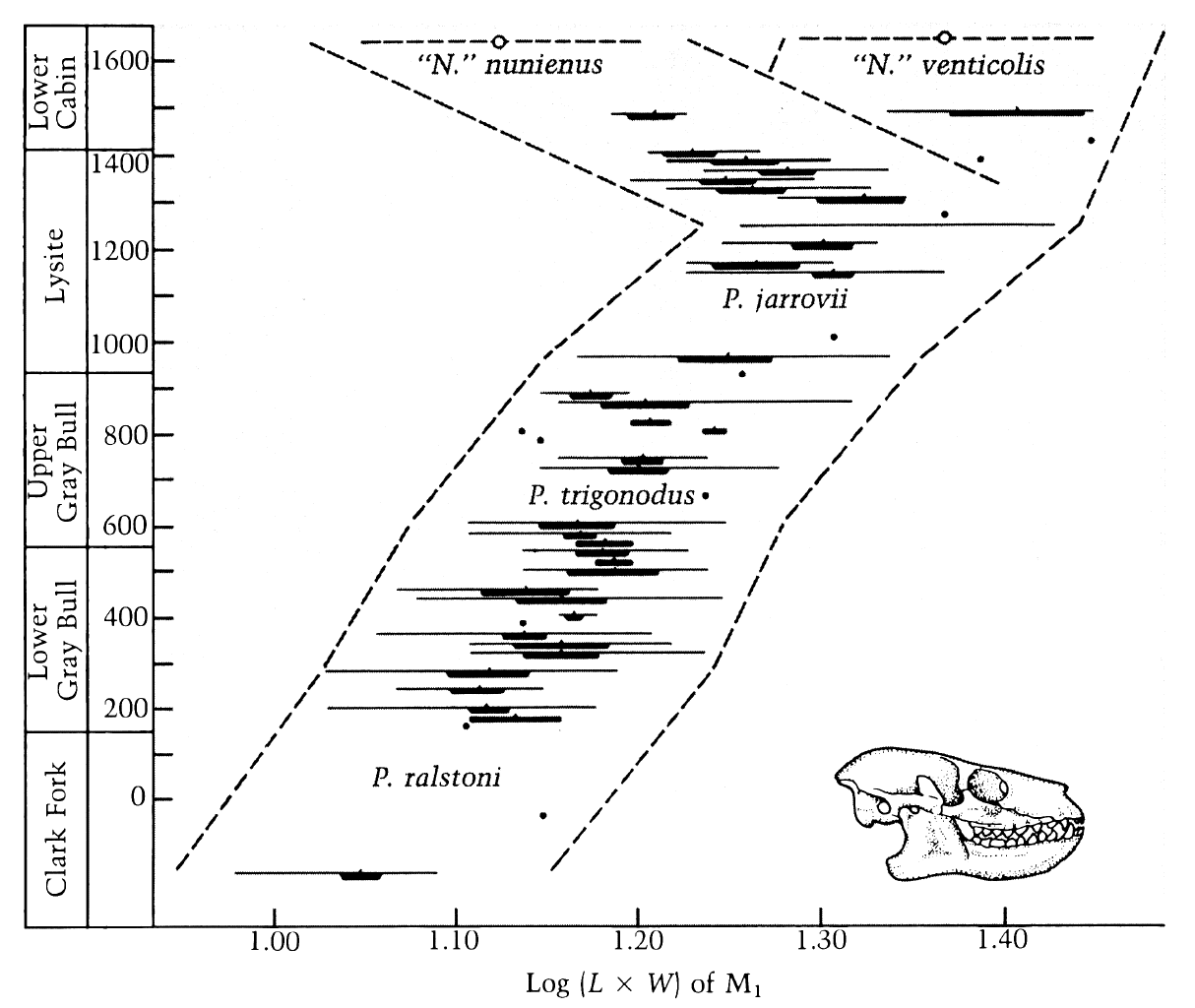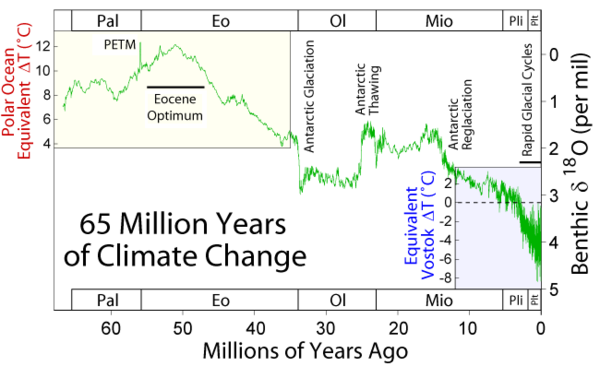Groups
The major adapiforme groups are:- Notharctidae (North American adapiformes)
- Notharctinae
- Cercamoniinae
- Adapidae
- Adapinae (European adapiformes)
- Sivaldapidae (south-east Asia adapiformes)
The Notharctine Cantius is the earliest adapiforme in North America and also one of the earliest in Europe.
Bodies
Body sizes range from around 1kg to 7kg for Notharctus robustior, with a few species weighing less than 500g, and one, Anchomys gaillardi weighing around 50g. Gingerich (1977) famously showed a gradual evolutionary trend for body-size increase amoung some Adapiformes. Gould and Eldridge cited this case in their famous punctuated equilibria discussion as an example however of the data not meeting the gradualistic interpretation matched with it (Figure 1). |
| Figure1 |
Adapiformes have sloping facets of their ankle bones and and characters of the distal tibia (presumably that link with the ankle features) that associate them with Lemuriformes (lemurs and lorises). They possess a post orbital bar, thus linking them with all other euprimates. Adapids had a dental formula of 2143 (early ones at least), lack a hypocone, have an elevated trigonid, and an unfused mandibular symphysis. Adapids have a petrosal bulla with a ring-like ectotypmanic included within the bulla (bullar morphology receives a lot of attention in primate systematics). In the cheiridia, adapiformes have opposable first digits for grasping. Their orbits are obliquely facing allowing for some stereoscopic vision and the lacrimal is included within the orbit. Their snouts are large and have lots of turbinates. Some workers have been able to pick out (in some specimens) boney features (such as a gap between the upper incisors) that might correlate with the wet-nosed' condition of modern strepsirrhines. Some have, in a heterodox position, listed a set of features thought to link adapiforms to anthropoids, in particular the cercamoniine adapiformes.
Adapiformes generally have mobile shoulder joints, which makes sense for active arboreal species.
Some notharctines were potentially vertical clingers and leapers, having short and high trochlea with the capitulum extending below the trochlea. For these potential VCL-ers, the elbow may not have allowed the forearm to fully extend, but the forearm may have had good twisting ability. Potentially arguing against the VCL hypothesis, none of the notharctines have knees like those of tarsiers and galagos, which are specialized leapers.
Adapines were different; they were possibly slow-climbing arboreal quadrupeds, agile but non-leapers. They were potentially loris like in their habits.
Diet
Some adapiforms have good zyogmatics and saggital crests suggesting more frugivorous or folivorous diets. The tiny Anchomys had insectivore-like teeth, and other small forms may also have been insectivorous. Most other species are over 1kg and were likey frugi/folivores. Covert (1986) found a high molar shearing coefficient (`spikiness' of teeth) for Adapis, Leptadapis, Notharctus, Caenopithecus, and Smilodectes (which are also larger adapiforms). The Sivaladapids also have folivorous molar shearing coefficients.
Climate
 |
| Figure 2 |